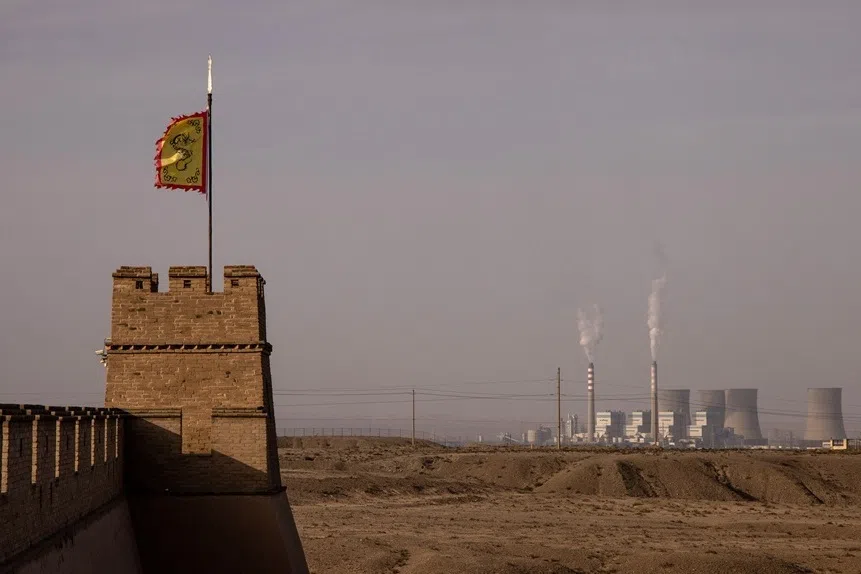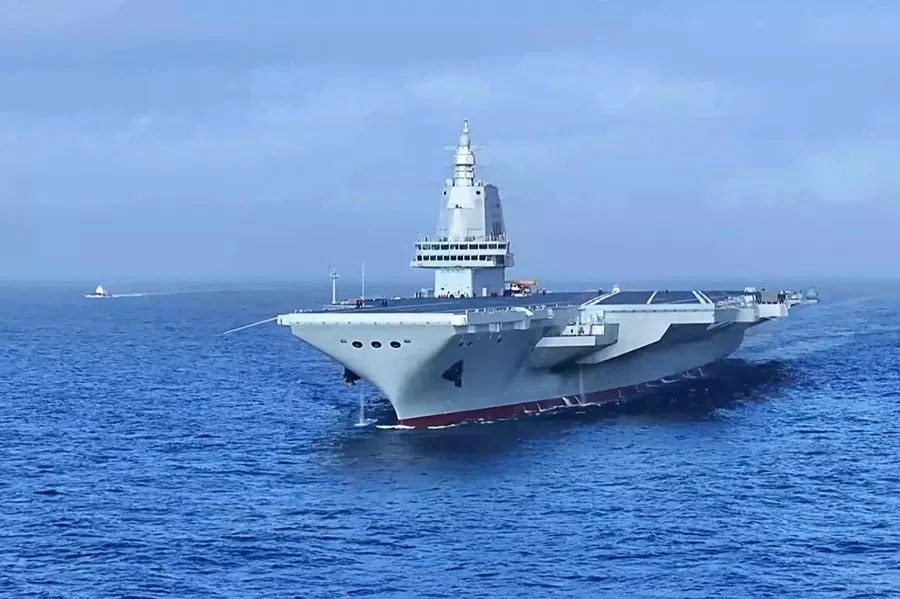Maintaining the status quo: US and China have clashing interpretations
Former journalist Goh Choon Kang says the recent non-dialogue between China and the US at the Shangri-La Dialogue in Singapore shows the two countries' very different interpretations of maintaining the status quo, and their differing strategic goals. Moreover, the growing rivalry between both sides will bring spillover effects to the entire Asia-Pacific region.
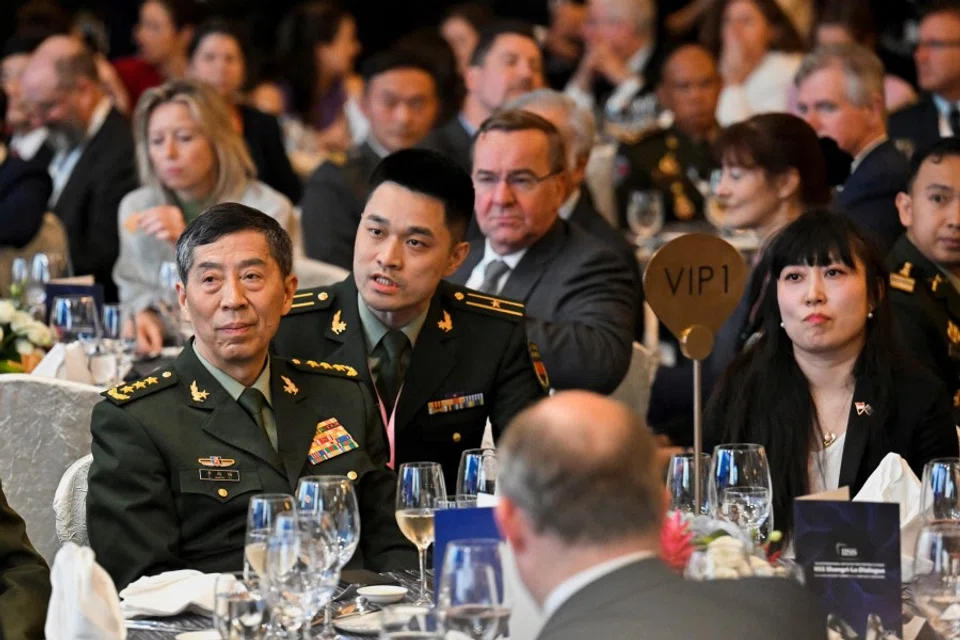
At this year's Shangri-La Dialogue, there was no dialogue between the US and China, only mutual provocation. China had earlier turned down the US request for a bilateral meeting at the sidelines of the dialogue - initially, this was thought to be mainly due to Washington's refusal to lift sanctions against Chinese Defence Minister Li Shangfu, but in fact, the issue is far more complex. Generally, over the past few years, the US has changed the military landscape in the entire Asia-Pacific region, creating an encirclement of China. Of course, the key issue is Taiwan, which is China's red line that cannot be crossed.
For China, maintaining communication between the two militaries is important to avoid any accidental clashes. However, at this point, a meeting between the defence ministers of both countries seems to be of no real significance. Dialogue cannot change the current situation, when the US has already completed its encirclement. The US's ultimate intention is now evident, as reiterated by US Defence Secretary Lloyd Austin in his speech at the dialogue: the US is committed to preserving the status quo in the Taiwan Strait, and opposes unilateral changes in the status quo by either side.
For China, maintaining the status quo means no reunification, which is unacceptable; an indefinite maintenance of the status quo also means reunification is at some unknown time, which Beijing also cannot accept.
Different attitudes towards maintaining the status quo
In simple terms, this is the US's ultimate strategic goal in the Taiwan Strait. The so-called status quo means "one China, one Taiwan", where there is no timeline for the so-called maintenance of the status quo. For China, maintaining the status quo means no reunification, which is unacceptable; an indefinite maintenance of the status quo also means reunification is at some unknown time, which Beijing also cannot accept.
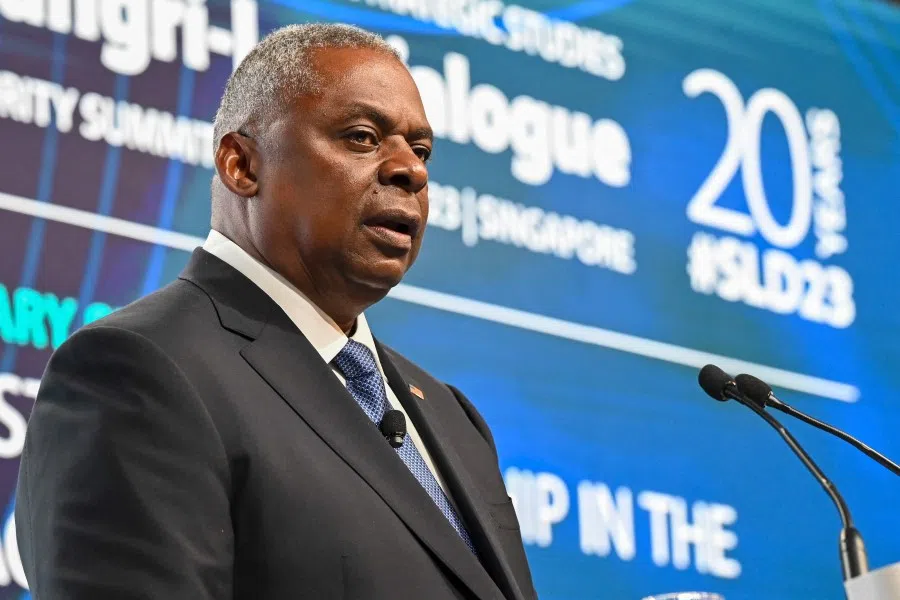
Austin said it is the US's job to build strong deterrence capabilities to prevent conflict in the Taiwan Strait, which means deterring Beijing from using force against Taiwan. He also pledged to support US allies and partners in dealing with coercion and bullying - all these comments were directed at China. So-called building of strong deterrence capabilities to prevent conflict in the Taiwan Strait implies deterring China from launching a military attack on Taiwan or using force to achieve reunification. At the same time, it involves strengthening efforts to maintain the current status quo within Taiwan. The longer the status quo is maintained, the stronger the Taiwanese people's sense of national identity will become, which will make it easier to oppose reunification.
US 'hollowing out the one-China principle'
In other words, in opposing reunification by force, the US does not want reunification, even if it is peaceful reunification, because it does not align with its maritime interests in the region. On 4 June, The Straits Times featured a report by US correspondent Nirmal Ghosh discussing two new books, one by Professor Jin Keyu of the London School of Economics on China-US relations, and the other book by Ryan Hass, Richard Bush, and Bonnie Glaser discussing the Taiwan issue.
The first provides a new perspective on China, while the second suggests that the US should have a more nuanced and comprehensive approach to the Taiwan issue. Ghosh said these two new books brought a breath of fresh air to the current feverish anti-China sentiment in Washington. Simply put, these two books address the US's lack of understanding about mainland China and the Taiwan issue.
The reporter quoted an interesting suggestion from Bonnie Glaser, Indo-Pacific managing director of the German Marshall Fund of the US - she said the Biden administration could also reassure the Chinese that it would not block the implementation of any negotiated outcome between Beijing and Taipei that is acceptable to both sides.
She said: "That's something that prior administrations used to say. 'As long as it's peaceful, we'll agree on any outcome that the two sides agreed to. But we don't say that now."
Emphasising the maintenance of the status quo without discussing cross-strait negotiations is indeed a strategic approach by the US.
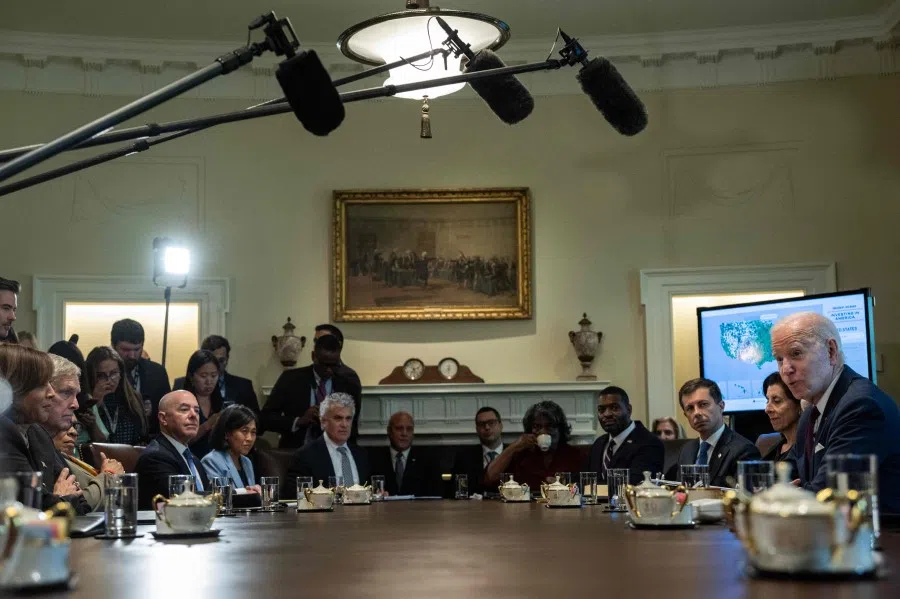
Is this a confirmation of the speculation regarding the US's strategic objectives mentioned above? Emphasising the maintenance of the status quo without discussing cross-strait negotiations is indeed a strategic approach by the US. In practice, besides building new containment measures and strengthening deterrence capabilities, it encourages the current policies implemented by Taiwan's Democratic Progressive Party (DPP) government to maintain the status quo and reject reunification, which goes hand in hand. So, Beijing's understanding that the US is "hollowing out the one-China principle" is correct.
China's rebuttal
In response to Austin's speech, Lieutenant General Jing Jianfeng, deputy chief of staff of the Joint Staff Department of the Central Military Commission, immediately held a briefing on the sidelines of the Shangri-La Dialogue to refute his statements. He accused the US of calling for communication while damaging China's interests and concerns, as well as claiming to strengthen crisis management while provoking and demonstrating strength, which is unreasonable. He called on the US to respect China's core interests and major concerns and take action to remove obstacles to military exchanges between the two countries.
Jing made it clear that the People's Liberation Army is "always prepared for war and capable of fighting at any time", and will resolutely defend national sovereignty and territorial integrity, adding that the Taiwan issue "does not allow any compromise or concession". He also criticised the US for continually diluting and undermining the one-China principle, strengthening official exchanges with Taiwan, tolerating activities promoting Taiwan independence, ramping up arms sales to Taiwan in terms of volume and functions, and bringing in other countries to intervene in the Taiwan issue.
...the fact is that the US has already interfered, and "red lines" have been set that both sides of the Taiwan Strait cannot cross.
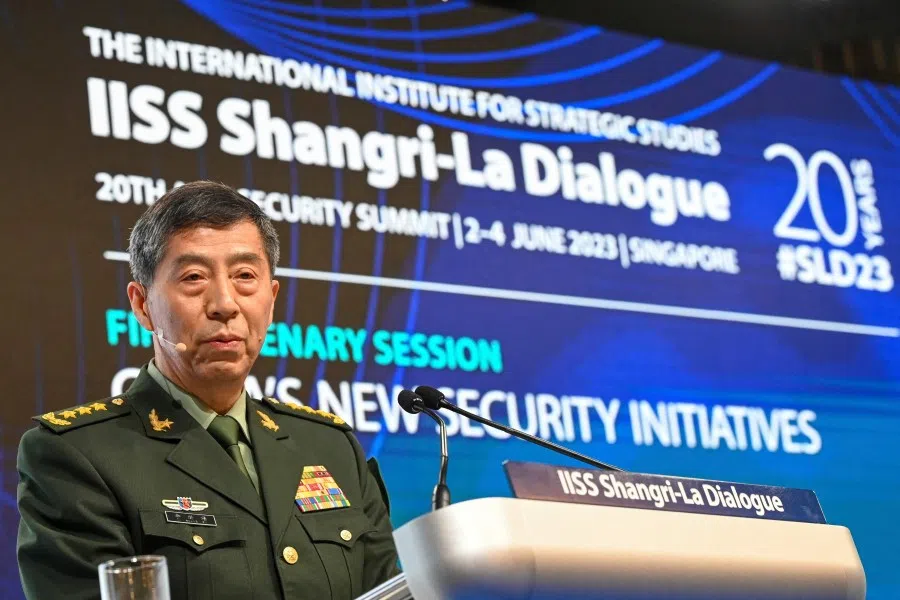
The next day, when it was Li Shangfu's turn to speak, he declared that the Taiwan issue is China's internal affair, which is beyond question, and resolving the Taiwan issue is a matter for the Chinese people themselves and should not involve any external forces. However, the fact is that the US has already interfered, and "red lines" have been set that both sides of the Taiwan Strait cannot cross.
The US's strategic reasons for strong new stance
When it comes to Taiwan, the US has explicitly stated in the Shanghai Communique that Taiwan is part of China. Why take such a strong new stance now? Times have changed. Firstly, China is now regarded as the US's primary competitor, threatening its position as a global hegemon. Secondly, China now has a stronger military force to promote reunification. Once reunification happens, the US's presence and influence in the Asia-Pacific region would be greatly diminished.
The same day that Austin spoke, the US Seventh Fleet announced that US missile destroyers and Canadian naval frigates conducted routine transits through the Taiwan Strait, stating that it was in accordance with international law regarding freedom of navigation and overflight in international waters. This display of strength, coupled with the remarks by the US defence minister, is clearly provocative. One can imagine that if the two sides were to be reunified, would US warships still have such "freedom"? Certainly not, as by then the Taiwan Strait would be considered China's internal waters.
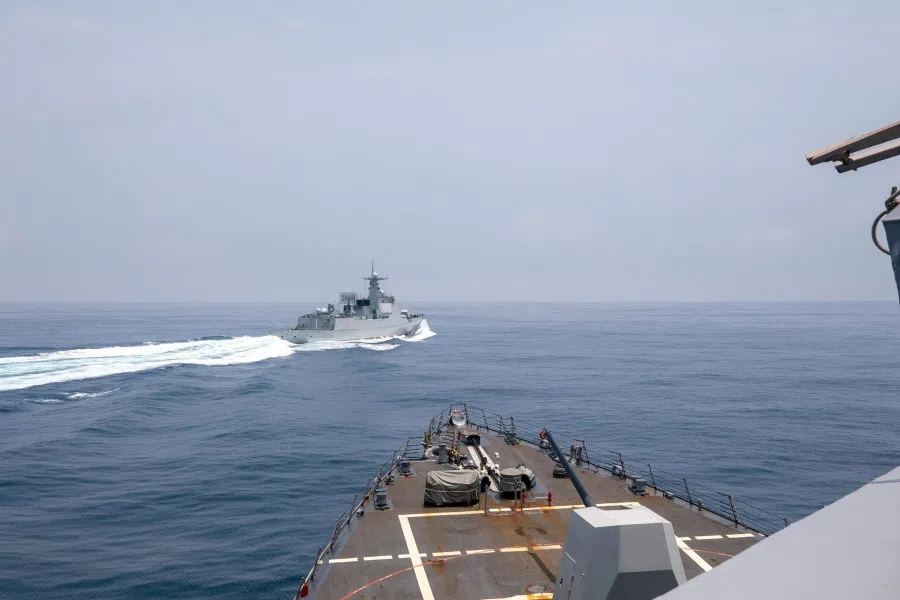
So, the US has not only shifted from ambiguity to clarity, but has also enlisted the support of Japan, South Korea, and Australia. This is why Japan has said that any issue concerning Taiwan is also a matter of concern for Japan.
... the continued rivalry between the two sides will have spillover effects, including dragging the entire Asia-Pacific region into an arms race.
In his book Musings - Series Two, former Singapore minister George Yeo cited a metaphor by Lee Kuan Yew comparing China and Taiwan to two lines, to explain three attitudes towards reunification. China of course hopes that the two lines will converge as soon as possible, which means reunification. Singapore, considering the military training facilities in Taiwan, would prefer a later convergence. The US and Japan, on the other hand, hope that the two lines remain divergent for as long as possible. Based on the current situation, the attitude of the US has changed, and it seems to hope that the two lines will never converge, which is probably the underlying meaning behind maintaining the status quo.
Does this mean that China and the US will ultimately go to war? Not necessarily. As long as Taiwan does not dare to declare independence, Beijing probably will not and need not take action. The world is constantly changing, and the current McCarthyist paranoia in the US cannot persist indefinitely. After all, China is not the Soviet Union, and there are significant economic and trade interests intertwined between China and the US. However, the continued rivalry between the two sides will have spillover effects, including dragging the entire Asia-Pacific region into an arms race.
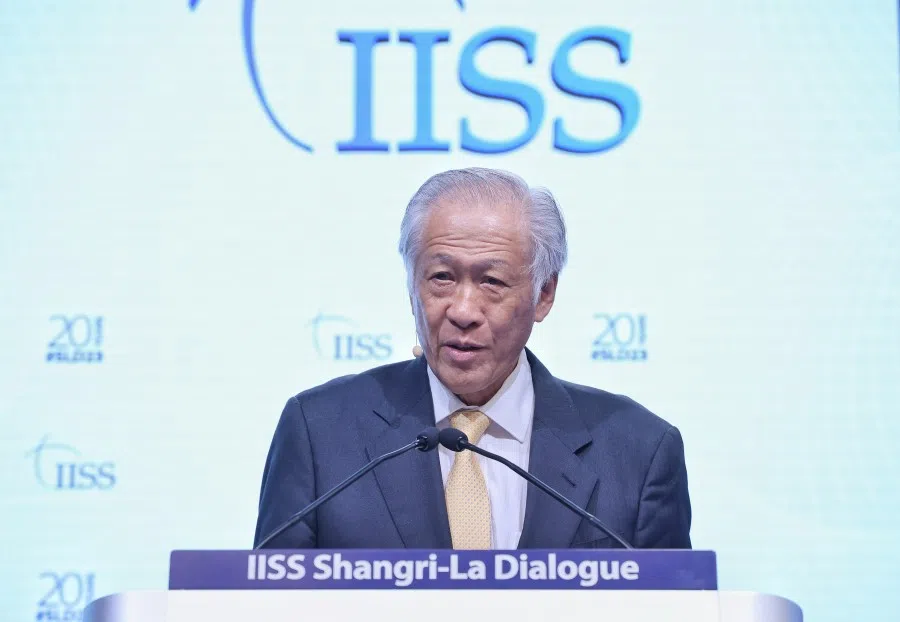
Singapore Defence Minister Ng Eng Hen brought up this point in his speech on the last day of the Shangri-La Dialogue, noting that global military expenditure reached a high of US$2.2 trillion last year. By 2030, the projected military spending for the US and China will reach US$1 trillion and US$500 billion respectively, while Australia, Japan, and India will spend between US$40 billion and US$180 billion, and ASEAN countries will increase military spending by 40% to US$130 billion.
Apart from enriching arms dealers, what benefits will this bring to the world and the region? When dialogue between China and the US turns into confrontation, we can only hope that both sides will cease hostilities in time, accept the new geopolitical reality, and reshape stable big-country relations.
Related: China at the centre of the world's politics | SEA's great power 'neutrality' risks being pro-China and anti-US | Singapore and the US: Speaking hard truths as a good friend | Shangri-La Dialogue 2022: The paradox of peace and power | Shangri-La Dialogue 2022: A tougher diplomatic battle for China?

